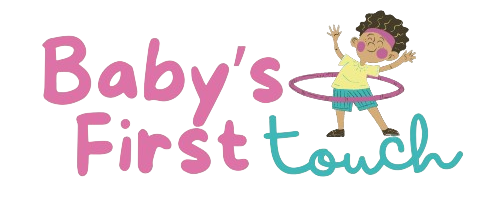Table of Contents
- Understanding Addiction: More Than Just Willpower
- The Ripple Effect: How Addiction Impacts the Entire Family
- Recognizing the Signs: When Concern Turns to Certainty
- Starting the Conversation: Approaching Your Loved One
- Supporting Recovery vs. Enabling Addiction: A Crucial Distinction
- Setting Healthy Boundaries: Protecting Yourself and Encouraging Change
- Prioritizing Self-Care: You Can’t Pour from an Empty Cup
- Navigating Treatment and Recovery: The Path Forward
- Conclusion: Finding Hope and Healing on the Family Recovery Journey
Walking Through the Storm Together: Dealing with Family Addictions and Recovery
It often starts subtly. A few too many drinks after work, reliance on prescription pills, secretive behavior. Before you know it, the shadow of addiction has fallen over someone you love, and by extension, your entire family. Watching a family member struggle with substance abuse or behavioral addiction is heartbreaking, confusing, and utterly overwhelming. It’s a storm that doesn’t just soak the person caught in the downpour; it ripples outwards, affecting the emotional, financial, and psychological well-being of everyone close.
You might feel helpless, angry, scared, or even guilty. You might wonder, “What did I do wrong?” or “How can I fix this?” These feelings are valid, and you’re not alone. Millions of families navigate the turbulent waters of addiction every day. The good news? There is hope. Recovery is possible, not just for the individual struggling, but for the family unit as a whole. This article is your guide – a compassionate companion to help you understand family addiction, learn how to cope, set healthy boundaries, support recovery effectively, and most importantly, take care of yourself through the process.
Understanding Addiction: More Than Just Willpower
Before we can effectively deal with addiction in the family, it’s crucial to understand what it truly is. Decades of scientific research have shown that addiction is a complex brain disease, not a moral failing or a lack of willpower. It fundamentally changes brain structure and function, particularly in areas related to reward, stress, self-control, and judgment.
It’s a Disease, Not a Choice (Anymore)
While the initial choice to use a substance or engage in a behavior might be voluntary, once addiction takes hold, the brain’s reward system is hijacked. The substance or behavior becomes paramount, overriding rational thought and survival instincts. The person struggling isn’t choosing the addiction over their family; the disease compels them towards it. Understanding this medical perspective can shift our approach from judgment and frustration towards empathy and strategic support.
Types of Addiction
Addiction isn’t limited to alcohol or illicit drugs. It can manifest in various forms:
- Substance Use Disorders (SUDs): Alcohol, opioids (heroin, fentanyl, prescription painkillers), stimulants (cocaine, methamphetamine), sedatives, hallucinogens, cannabis, tobacco.
- Behavioral Addictions: Gambling, compulsive shopping, internet/gaming addiction, sex addiction, eating disorders (which often co-occur with substance abuse).
Recognizing the specific type of addiction is important for seeking appropriate treatment, but the underlying family dynamics and coping strategies often share common ground.

The Ripple Effect: How Addiction Impacts the Entire Family
Addiction is often called a “family disease” because its effects extend far beyond the individual. The family system becomes disorganized, stressed, and often dysfunctional as it tries to cope with the chaos addiction creates.
Common Family Roles in Addiction
Family members often unconsciously adopt specific roles to survive the dysfunction. Recognizing these roles can be the first step towards breaking unhealthy patterns:
- The Enabler (or Caretaker): Tries to “help” by making excuses, covering up, paying bills, or rescuing the person from consequences. While often well-intentioned, enabling prevents the person from facing the reality of their addiction and delays seeking help.
- The Hero: Often the high-achiever, tries to bring positivity and success to the family to counteract the negativity of the addiction. They feel responsible for making the family look good but often suffer from immense pressure and anxiety.
- The Scapegoat: Acts out, gets into trouble, and essentially becomes the family’s identified problem, diverting attention from the addiction. They often feel blamed and resentful.
- The Lost Child: Withdraws, becomes quiet and invisible to avoid the chaos. They often suffer from loneliness, low self-esteem, and difficulty forming connections later in life.
- The Mascot: Uses humor and charm to lighten the mood and distract from the tension. They may seem cheerful but often mask underlying fear and insecurity.
These roles are coping mechanisms, but they prevent open communication and healthy functioning. Healing involves recognizing these roles and learning healthier ways to interact.
Codependency: Losing Yourself in the Chaos
Codependency is a common pattern in families affected by addiction. It involves an excessive emotional or psychological reliance on a partner or family member, often the one with the addiction. Codependent individuals often:
- Derive their self-worth from taking care of others.
- Have difficulty setting boundaries.
- Neglect their own needs and feelings.
- Feel responsible for the addict’s actions and recovery.
- Experience high levels of anxiety and stress related to the loved one’s behavior.
Addressing codependency is vital for the family member’s own well-being and for creating a healthier environment conducive to recovery.
Recognizing the Signs: When Concern Turns to Certainty
Identifying addiction isn’t always straightforward, especially in the early stages. Denial is powerful, both for the person using and for the family members who don’t want to face the painful reality. However, recognizing the signs is crucial for intervening early.
Behavioral and Psychological Signs:
- Increased secrecy, lying, or evasiveness.
- Withdrawal from family activities and social isolation.
- Loss of interest in hobbies or activities previously enjoyed.
- Unexplained financial problems or borrowing/stealing money.
- Neglecting responsibilities (work, school, home).
- Sudden mood swings, irritability, anger outbursts, or anxiety.
- Changes in personality or attitude.
- Defensiveness when asked about substance use or behavior.
- Risky behaviors (e.g., driving under the influence).
Physical Signs (Vary Depending on Substance):
- Changes in appearance (poor hygiene, weight loss/gain).
- Changes in sleep patterns (insomnia or sleeping too much).
- Bloodshot eyes, dilated or constricted pupils.
- Slurred speech or impaired coordination.
- Unexplained injuries.
- Withdrawal symptoms when unable to use (e.g., tremors, nausea, sweating).
If you notice a consistent pattern of these signs, it’s time to consider the possibility of addiction and think about how to approach the situation.

Starting the Conversation: Approaching Your Loved One
Talking to a loved one about their suspected addiction is one of the most challenging steps. Fear of conflict, denial, or pushing them away can be paralyzing. However, a thoughtful, compassionate approach can open the door to help.
Timing and Setting
Choose a time when the person is sober, calm, and you have privacy. Avoid bringing it up during or immediately after an argument, or when they are under the influence.
Use “I” Statements
Focus on your own feelings and observations, rather than accusations. Instead of “You’re always drunk!”, try “I feel worried and scared when I see you drinking heavily because I care about your health.” This reduces defensiveness.
Be Specific and Non-Judgmental
Mention specific behaviors and their impact. “I noticed you missed Sarah’s school play last week, and I felt sad for her and concerned about you.” Avoid labels like “addict” or “alcoholic” in the initial conversation, as they can trigger shame and denial.
Express Concern and Support
Reiterate that you love them and are worried about their well-being. Emphasize that you want to support them in getting help.
Be Prepared for Denial or Anger
They may deny having a problem, minimize their use, or become angry. Try to remain calm and restate your concerns without escalating the conflict. It may take multiple conversations.
Consider a Formal Intervention
If individual conversations aren’t working, a formal intervention guided by a professional interventionist might be an option. This involves a structured meeting where family members and concerned friends express their concerns and outline consequences if the person refuses addiction treatment. Interventions require careful planning and professional guidance to be effective and safe.
Supporting Recovery vs. Enabling Addiction: A Crucial Distinction
Wanting to help is natural, but it’s vital to distinguish between genuine support and enabling behaviors that inadvertently perpetuate the addiction.
What Enabling Looks Like:
- Making excuses for their behavior.
- Giving them money that might be used for substances/gambling.
- Lying or covering up for them.
- Taking over their responsibilities.
- Shielding them from the natural consequences of their actions.
- Ignoring the problem or pretending it isn’t happening.
What Healthy Support Looks Like:
- Expressing concern and love without judgment.
- Encouraging them to seek professional addiction help.
- Setting and maintaining clear, consistent boundaries.
- Refusing to shield them from consequences.
- Offering practical support for recovery efforts (e.g., driving to meetings, offering encouragement).
- Educating yourself about addiction and recovery.
- Seeking your own support (therapy, Al-Anon/Nar-Anon).
- Celebrating their recovery milestones.
Shifting from enabling to supporting often involves tough love and can feel uncomfortable initially, but it’s essential for both your well-being and their chance at recovery.
Setting Healthy Boundaries: Protecting Yourself and Encouraging Change
Setting boundaries is perhaps one of the most critical skills for families dealing with addiction. Boundaries are not punishments; they are clear limits on what behavior you will and will not accept, designed to protect your own emotional, physical, and financial health.
Why Boundaries Are Essential
- They protect you from the chaos and harm caused by the addiction.
- They can help the person with the addiction recognize the negative consequences of their behavior.
- They communicate clear expectations and reduce ambiguity.
- They empower you to take care of your own needs.
- They break the cycle of enabling.
Examples of Healthy Boundaries
- “I love you, but I will not give you money if I suspect it will be used for drugs/alcohol/gambling.”
- “You are not welcome in my home when you are under the influence.”
- “I will not lie to your boss or make excuses for you if you miss work due to substance use.”
- “I am happy to talk when you are sober, but I will end the conversation if you become verbally abusive.”
- “I will support your efforts to get treatment, but I will not participate in covering up your addiction.”
Consistency is Key
Setting boundaries is only effective if you consistently enforce them. This can be incredibly difficult, especially when faced with manipulation, anger, or pleading. Stick to your limits. This consistency sends a clear message and prevents mixed signals.

Prioritizing Self-Care: You Can’t Pour from an Empty Cup
Living with active addiction is exhausting and takes a significant toll on family members. Chronic stress, anxiety, fear, and emotional pain are common. It is absolutely essential to prioritize your own self-care. This isn’t selfish; it’s necessary for survival and for being able to offer healthy support.
Why Self-Care Matters
- Reduces stress, anxiety, and burnout.
- Improves your physical and mental health.
- Helps you maintain perspective and make clearer decisions.
- Models healthy coping mechanisms.
- Allows you to sustain your support role without collapsing.
Practical Self-Care Strategies
- Seek Professional Help for Yourself: Therapy can provide coping strategies, help process complex emotions, and guide you in setting boundaries.
- Join Support Groups: Groups like Al-Anon, Nar-Anon (for families of addicts), or Codependents Anonymous (CoDA) offer invaluable peer support, understanding, and shared experience. You’ll realize you’re not alone.
- Engage in Stress-Reducing Activities: Exercise, meditation, yoga, deep breathing, spending time in nature.
- Maintain Social Connections: Don’t isolate yourself. Connect with supportive friends or family members (outside the immediate crisis, if necessary).
- Pursue Hobbies and Interests: Make time for activities that bring you joy and distraction.
- Prioritize Physical Health: Ensure adequate sleep, healthy nutrition, and regular check-ups.
- Educate Yourself: Learning more about addiction can reduce feelings of confusion and helplessness.
Remember, taking care of yourself is not a luxury; it’s a necessity when dealing with the chronic stress of family addiction.
Navigating Treatment and Recovery: The Path Forward
When your loved one decides to seek help, it’s a significant step. Understanding the treatment landscape can help you support their journey.
Types of Addiction Treatment
- Detoxification (Detox): Medically supervised withdrawal management, often the first step for substance addictions.
- Inpatient/Residential Treatment: Structured, live-in programs offering intensive therapy and support (usually 30-90 days or longer).
- Outpatient Treatment: Therapy and counseling sessions attended while living at home (PHP, IOP, standard outpatient).
- Therapy/Counseling: Individual, group, and family therapy are crucial components of recovery. Cognitive Behavioral Therapy (CBT) and Dialectical Behavior Therapy (DBT) are common modalities.
- Medication-Assisted Treatment (MAT): Use of medications (like methadone, buprenorphine, naltrexone) combined with counseling, particularly for opioid and alcohol use disorders.
- Support Groups: 12-step programs (AA, NA) or alternatives (SMART Recovery) provide ongoing peer support.
Family Involvement in Treatment
Many treatment programs incorporate family therapy or education sessions. Participating can help heal family dynamics, improve communication, and establish a supportive home environment for long-term recovery.
Managing Expectations: Recovery is a Marathon, Not a Sprint
Recovery is a lifelong process, not a one-time event. Relapse can be part of the journey for many; it doesn’t mean failure, but rather a need to reassess and strengthen the recovery plan. Patience, understanding, and continued support (with boundaries) are crucial.
- Rebuilding Trust: This takes time and consistent effort from the person in recovery. Be open but cautious.
- Celebrate Milestones: Acknowledge and celebrate progress, no matter how small.
- Ongoing Support: Encourage continued participation in therapy, support groups, and healthy activities.
- Continued Family Healing: Family recovery often progresses alongside individual recovery. Continue attending Al-Anon/Nar-Anon or family therapy.

Conclusion: Finding Hope and Healing on the Family Recovery Journey
Dealing with a loved one’s addiction is an immensely challenging experience, fraught with pain, fear, and uncertainty. It tests the limits of love, patience, and resilience. Yet, amidst the storm, there is always hope. Understanding addiction as a disease, recognizing its impact on the family system, and learning the difference between enabling and healthy support are vital first steps.
Setting firm boundaries is not about rejection; it’s about self-preservation and creating an environment where recovery has a better chance to take root. Crucially, prioritizing your own self-care and seeking support through therapy or groups like Al-Anon/Nar-Anon is non-negotiable – you cannot effectively help others if you yourself are drowning.
The path to family recovery is rarely linear. It requires courage, consistency, and a willingness to change established dynamics. It involves difficult conversations, tough decisions, and immense patience. But recovery *is* possible. Families can heal, communication can be restored, and trust can be rebuilt, piece by piece. If you are facing this struggle, know that you are not alone, and help is available for both your loved one and for you. Take that first step today – reach out, learn, connect, and begin the journey towards healing.



